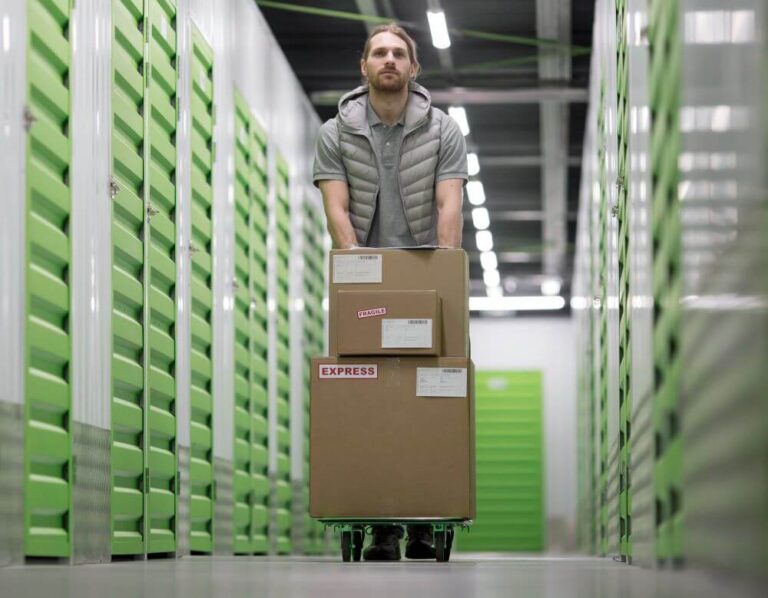When space becomes a problem, efficiency pays the price. Excess inventory, idle vehicles, or seasonal equipment can turn business spaces into costly bottlenecks, leading to higher expenses and slower operations. Instead of expanding square footage or settling for daily chaos, businesses are turning to more innovative storage strategies to stay agile.
From warehouses to vehicle fleets, the way you store your assets can shape how effectively you serve customers, respond to market shifts, and manage expenses. Here’s how businesses can rethink their approach to storage and find new efficiencies.
Understanding Business Storage Needs
Every business has storage needs, but not all of them are obvious. A construction company might battle with parking heavy equipment between jobs. A florist may struggle to store seasonal decor. A retail store may have months of backstock that it can’t fit on the floor. Even digital-first businesses need places to stash trade show booths, files, or fleet vehicles.
The key is to identify the cost of your current storage habits. Are you paying for space you rarely use? Are your team members wasting time hunting for what they need? Storage decisions can have ripple effects on productivity, labor costs, and even safety.
Choosing the Right Storage Solution
Defaulting to the most obvious storage space can cost more in the long run. On-site options are convenient but take up valuable workspace. Off-site solutions might offer better flexibility and security, but come with trade-offs.
Evaluate each option based on cost, access, security, and future scalability. Features like climate control, 24-hour access, and proximity to your primary business location can make or break the choice.
Many businesses find success with a blended approach: store frequently used items on-site, and move overflow or seasonal inventory off-site. It’s a way to keep operations smooth without sacrificing space.
Vehicle Storage for Urban-Based Businesses
In crowded cities, parking is expensive, space is tight, and risks like tickets or damage are high. Urban businesses with service vans, fleet vehicles, or branded cars need a smarter plan.
Off-site vehicle storage helps reclaim space and minimize risk. In New York City, for example, businesses can find secure car storage facilities using a local directory of NYC vehicle storage facilities. Storing vehicles during off-hours or slower seasons keeps operations lean and helps avoid avoidable fines or downtime.
Rather than letting vehicles crowd your limited space or budget, treat vehicle storage like a strategic part of operations. Even small businesses can benefit from making the shift.
Budgeting Without Bleeding Cash
Storage costs money, but poor storage decisions can bleed it. Crowded or misused space leads to inefficiencies, mistakes, and unnecessary overhead. At the same time, overpaying for underused storage erodes your bottom line.
Start by calculating the true cost of your current setup: square footage, utilities, insurance, and staff time. Then compare alternatives, from shared warehouses to flexible self-storage options.
Match the value of what you’re storing to the type of storage you use. Critical items need climate control and strong security. Less-sensitive items don’t.
Long-Term vs. Short-Term Thinking
Look beyond the sticker price. The proper storage solution should grow with your business. Prioritizing flexibility, being able to scale up or down without penalty, is worth more than a rock-bottom rate.
If an item’s going to be in storage for more than 90 days, it deserves a proper, cost-effective home. Short-term needs may be better handled closer to your leading site.
If it works out best long term to have your own warehouse space then you will need to find a great location for this. Don’t panic if there is no heating solution in place for your employees, you can use portable industrial heaters. These let off enough heat to keep your whole warehouse warm and toasty all day.
Operational Integration: Making Storage Work Seamlessly
Storage isn’t just about space; it’s about systems. A storage solution only helps if it’s easy to manage and fits into your team’s workflow.
Use tools like inventory software, barcoding, or GPS to keep track of stored items. Even a simple spreadsheet can do wonders if it’s used consistently and maintained by the right people.
Assign accountability. Make it clear who’s responsible for what. This avoids confusion and keeps stored items from disappearing or gathering dust.
SOPs and Site Visits
Create clear protocols for accessing and maintaining stored items. Regular check-ins help prevent surprises. Even a 15-minute monthly review can catch problems early.
As your needs change, so should your storage setup. Don’t wait until you’re buried in clutter; schedule periodic audits to reassess what stays, what goes, and what needs a better home.
The Competitive Advantage of Organized Space
Smart storage decisions aren’t just about keeping things tidy; they impact your efficiency, costs, and ability to scale. A cluttered business struggles to respond quickly or adapt.
Take control by evaluating how and where you store your assets. With the right setup, you’ll free up resources and mental bandwidth for the work that moves your business forward.
From parked vans in New York to boxed-up trade show gear, what you store and how you store it makes a difference. And that difference shows up in your bottom line.


